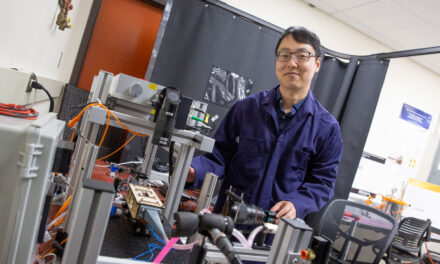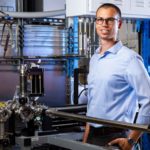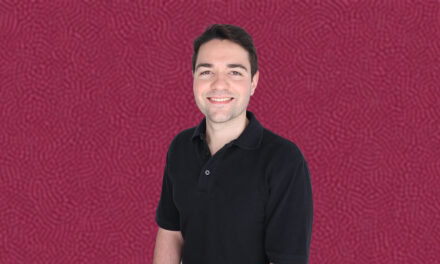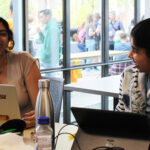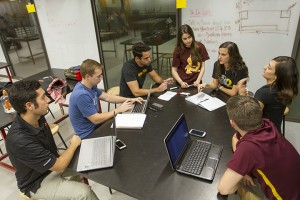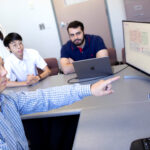
Engineering students aim to boost social efforts at Clinton Global Initiative event
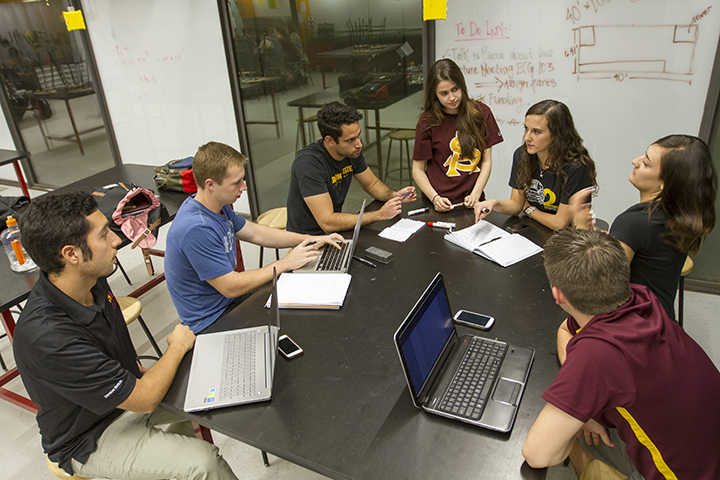
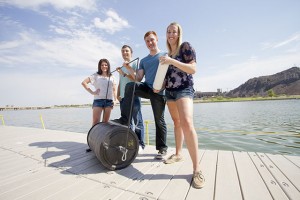
SafeSIPP co-founders Lindsay Fleming, Jacob Arredondo, Jared Schoepf and Taylor Barker with their prototype for water purification. Schoepf will participate in the Clinton Global Initiative University conference at ASU. Photographer Jessica Hochreiter/ASU.
Several students in Arizona State University’s Ira A. Fulton Schools of Engineering will be involved in the international Clinton Global Initiative University (CGI U) conference at ASU March 21-23.
The event gathers more than 1,000 college students and as many as 200 mentors from about 70 countries. The goal is to develop action plans for their endeavors to contribute solutions to societal challenges in education, environment and climate change, human rights, poverty alleviation and public health.
Students had to apply to participate in the high-profile conference, which is led by Chelsea Clinton, vice chair of the Clinton Foundation, by former President Bill Clinton, and former U.S. Secretary of State Hillary Rodham Clinton.
Among the Fulton Engineering Students participating:
Chemical engineering doctoral student Jared Schoepf is the CGI U representative for a project that has crafted technology to help provide remote communities in developing countries with clean drinking water.
Mechanical engineering major Sara Mantlik will represent a group of engineering undergraduates designing mobile dental-care facilities for use in communities with limited access to medical and dental services.
Raji Ganesan, a computer science major, is working on technology to enhance rehabilitation for people who have suffered strokes.
Hyder Hussain, a biomedical engineering and computational mathematics major, is part of a group of students in ASU’s Barrett, The Honors College working on mobile biosensor technology to detect health-threatening pathogens in water. Another team member will represent the project at CGI U.
‘High-powered” networking
Schoepf goes into this year’s CGI U conference with some experience at such social entrepreneurship events.
He participated in last year’s CGI U event at Washington University in St. Louis, focusing on ideas for furthering a project called Sustainable Storm Solutions.
That involves development of large metal grates designed to keep trash that collects in storm water drainage systems from making its ways into lakes and rivers, where it pollutes the water.
More recently he made a presentation on the SafeSIPP (Sustainable Innovative Portable Purification) project at the Global Social Entrepreneurship Competition, sponsored by the business school at the University of Washington in Seattle.
The project was one of only 20 led by teams of college students throughout the United States and other countries selected for the competition.
The sponsors “wanted only projects with the potential to be sustainable businesses and make a large social impact,” Schoepf explains.
SafeSIPP missed out on a top prize at the competition, but Schoepf says it gave him a valuable opportunity “to make a lot of connections with potential mentors,” including prominent entrepreneurs.
He expects CGI U at ASU to provide an equally advantageous platform to help SafeSIPP move forward.
SafeSIPP involves a portable three-phase water-purification system that works when a barrel—80 percent of it made from recycled materials—is rolled across the ground from a water source to a community for consumption.
It’s designed specifically for remote, rural communities where residents must use containers to carry water long distances from its source to their villages.
Plans are to establish pilot programs to test the technology in South Africa for its effectiveness and its impact on the local community – and to eventually expand the effort to Kenya, and possibly Central America and South America.
Participating in CGI U should enable Schoepf to meet experts who can school him on what is required to launch such pilot programs in other countries.
“All the networking gives you a chance to get feedback from some high-powered people, experts who know about the challenges your particular kind of project is going to have,” Schoepf says.
Like SafeSIPP, a project called Engineering Smiles emerged from Engineering Projects in Community Service (EPICS) in the Ira A. Fulton Schools of Engineering. It connects student with nonprofit groups and local municipalities who need engineering solutions to solve community problems.
EPICS brought together the six engineering students who are partnering with the nonprofit International Medical Alliance Helps organization (IMAHelps) to design and produce mobile surgical dental units for dentists who volunteer to provide care to residents of impoverished communities.
Engineering Smiles team members are Ilianna Chavez (engineering management), Gian Gonzalez (construction management), Nick Kemme and Sara Mantlik (both mechanical engineering), Fionnuala McPeake (biomedical engineering) and Leslie Thompson (chemical engineering). An aunt and uncle of Gonzalez are among co-founders of IMAHelps.
The team plans to design and build fully equipped dental care units compact enough to fit four of them on a bus. The students are hoping to have it ready for an IMAHelps trip to Nicaragua by the summer of 2015 and eventually for additional trips throughout Central America and Native American communities.
“I think CGI U selected us because our project is the kind that could have a real impact in places where medical and dental care is often a luxury,” Mantlik says.
Engineering Smiles, however, is only at the initial planning and design stages. Mantlik sees the showcase that CGI U offers as “chance to present the project on a big stage,” and get guidance that could help the team propel itself out of the starting gate.
Expecting inspiration
Ganesan. a student in ASU’s Barrett, The Honors College, was motivated to apply to participate in CGI U by the conference’s emphasis on students making a “commitment to action’’ to move beyond ideas and plans into actual progress, and by “how the conference leaders are intent on following up with a students after the event to ensure they are making that progress.”
She says she hopes the conference will help further her progress on the project she is developing in the Fulton Schools of Engineering Center for Cognitive Ubiquitous Computing (CUbiC).
Ganesan is using digital “smart” devices called Sifteo Cubes that provide users audiovisual feedback to achieve the “gamification” of stroke rehabilitation therapy.
Many of the current rehabilitative regimens are repetitive and fail to hold the interest of patients, she says. By integrating a competitive game into therapy sessions with the use of the “smart” technology, she intends to “make healing a more motivating and engaging process” that she believes will speed rehabilitation and more effectively enable users to regain a greater range of motion.
She will bring the technology to the CGI U conference, along with her research presentation and her business cards.
In addition to being excited about the chance to draw attention to her project, Ganesan says she expects to be inspired simply by “being in the same space with hundreds of incredibly talented and passionate students from all over the world who are making monumental contributions in a variety of arenas.”
Invaluable opportunity
Hussain, who attended last year’s CGI U conference in St. Louis, expects this year’s event at ASU to similarly boost his team’s determination to accomplish its goals.
Hussain is the only engineering student among molecular biology, anthropology and global health majors working on the HydroGene Biotechnologies project.
They’re striving to develop an affordable, mobile, easy-to-use sensor to detect pathogens in water that carry diseases – a device that would be a significant aid to protecting public health.
That goal poses big challenges, particularly finding ways to ensure the device can accurately detect and clearly differentiate between various strains of bacteria, and making the sensors temperature-resistant so they can be transported to various regions of the world that have different climate conditions and still maintain their effectiveness.
At last year’s CGI U conference, Hussain says, “We met many teams with connections to nongovernmental organizations from all around the world that would be able to help us transport and distribute our device in the future.”
He and his fellow students are still testing out ideas in the lab and developing a biosensor prototype. Team leaders decided to get involved in CGI U in the hope of learning lessons from other participants that would help advance the HydroGene project.
Says Hussain, “We see it as an invaluable opportunity to meet people with similar goals, and people who have experience doing the kind of work we want to do.”
Read more about teams and students participating in CGI U at ASU.
Media Contact:
Joe Kullman, [email protected]
(480) 965-8122
Ira A. Fulton Schools of Engineering



